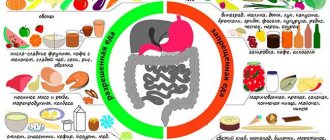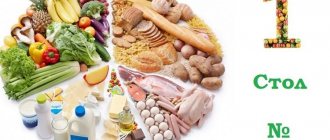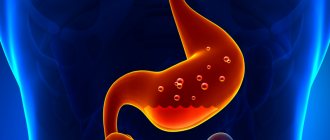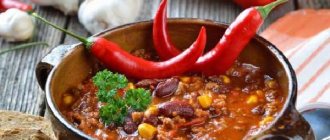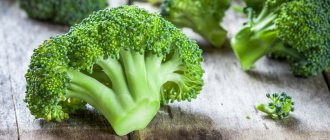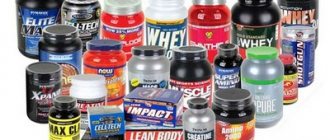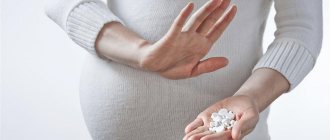Reflux gastritis requires adherence to a strict diet. In this case, you can achieve a reduction in exacerbations, eliminate unpleasant symptoms, and improve digestion. The diet for reflux gastritis is aimed at a gentle effect on the mucous membrane of the digestive organ, smooth movement of food into the intestines, and relieving the inflammatory process in the stomach caused by the disease.
General rules
Esophagitis is inflammation of the mucous membrane of the esophagus. Chronic diseases of the esophagus are most often associated with the reflux of gastric and duodenal contents into the esophagus (esophageal reflux). Hydrochloric acid , pepsin , and bile acids are considered factors of aggression that have a damaging effect. At the same time, bile acids can also cause malignancy (malignancy). The appearance of reflux is influenced by many factors: impaired gastric motility, short esophagus, decreased tone of the esophageal sphincters, diaphragmatic hernia or increased intra-abdominal pressure.
Thus, esophagitis is the most common complication of gastroesophageal disease and occurs in a third of patients suffering from this disease. There are catarrhal (non-erosive) and erosive forms of the disease. For a long time it was believed that these were successive stages of development, but the results of observations suggest that these forms do not tend to transform into one another and exist independently. It has also been found that esophagitis is not caused by direct mucosal acid damage, but by complex cytokine-induced mechanisms .
Separately, it is worth highlighting esophagitis caused by taking medications (these include non-steroidal anti-inflammatory drugs and biosphosphonates), radiation therapy and Candida fungi.
The bacterium Pyloric Helicobacter plays a major role in the development of gastritis (meaning the chronic form). Therefore, all patients with chronic gastritis are advised not only to undergo endoscopy, but also to diagnose H. Pylori infection.
With gastritis and esophagitis, the patient is bothered by epigastric pain, heartburn , sour belching and chest discomfort (feeling of a lump). Heartburn may worsen when lying down, after eating and eating foods that weaken the tone of the esophageal sphincter (alcohol, coffee, animal fats, chocolate, citrus fruits).
“Small” organic signs of gastrointestinal damage (gastritis and catarrhal esophagitis) are easier to treat than “large” (ulcerative esophagitis) and functional disorders.
The nutrition of patients is certainly of great importance. Eating spicy foods, hot and rough foods has an irritating effect and aggravates the course of gastritis and esophagitis. And fatty and fried foods, smoked foods, and alcohol cause increased reflux, which maintains inflammation of the esophagus. Eating a lot of food at night causes increased production of hydrochloric acid and contributes to its reflux into the esophagus at night.
The diet for gastritis and esophagitis is aimed at sparing the mucous membrane of the stomach and esophagus, and involves reducing the frequency of reflux. In this regard, it is recommended:
- split meals and moderate meals in the evening;
- consumption of products with an alkaline reaction (sour cream, cottage cheese, boiled meat, milk, steamed omelettes);
- limit the consumption of foods that have an irritating effect (hot, spicy, alcohol, coffee, onions, garlic, citrus fruits, sour foods);
- exclusion of foods that reduce the tone of the esophageal sphincter (animal fats, carbonated drinks, chocolate, strong coffee, rye bread).
For reflux and heartburn symptoms:
- quitting smoking, since nicotine weakens the tone of the esophageal sphincter;
- avoid bending over and performing exercises that involve abdominal tension;
- avoid constipation, as straining increases intra-abdominal pressure;
- exclusion of foods that cause flatulence (legumes, grapes, carbonated drinks, kvass, yeast baked goods, bread, raisins);
- Avoid taking medications that can cause reflux (beta blockers, tranquilizers, sedatives, theophylline , nitrates, prostaglandins, calcium channel inhibitors).
For these diseases, food should be boiled or steamed. The degree of sparing (meaning rubbing of food) depends on changes in the mucous membrane and the severity of symptoms. In case of erosive lesions of the mucous membrane of the stomach and esophagus, as well as severe pain symptoms, the most gentle diet is recommended, corresponding to dietary Table No. 1A :
- Meat/poultry/fish dishes prepared in the form of puree or soufflé (the meat is scrolled several times or beaten in a blender).
- Decoctions of cereals, pureed soups, puree soups with the addition of raw beaten eggs or cream.
- Milk, cream, thoroughly pureed cottage cheese or cottage cheese soufflé.
- Steamed omelettes or soft-boiled eggs.
- Buckwheat or oatmeal porridge, boiled in water and, if desired, milk. You can prepare pureed semi-liquid porridge with butter.
- Jelly made from berries and fruits, fruit jellies with sugar and honey.
- Tea with milk, rosehip infusion, diluted juices.
With catarrhal esophagitis and gastritis, there is no need for maximum sparing of the mucous membrane and patients are recommended to eat Tables No. 1B or No. 1 , in which wiping of food is not provided. Table No. 1 is suitable for long-term or constant nutrition , since its composition is complete and at the same time gentle on the stomach. No. 1 is recommended during the period of recovery and consolidation of treatment results. It is fashionable to use this therapeutic food during periods of mild exacerbation or in the autumn-spring period, when the patient is taking anti-relapse treatment.
All irritating foods are excluded - broths, citrus fruits, rye bread, chocolate, tomatoes, dairy products, ketchup, turnips, radishes, sour drinks, citrus juices, onions, garlic, coarse cereals, tomato paste, cranberries, peppers, spices, mint, meat with tendons, ginger, alcohol, coffee, strong tea.
The amount of protein in the diet increases to 100 g per day, especially in the presence of erosions and esophageal reflux. This is explained by the fact that protein is necessary for reparative processes, and it increases the tone of the esophageal sphincters. At the same time, it is recommended to reduce animal fats in the diet - you should not eat cream, fatty pork, butter in large quantities, fatty goose and duck meat, or products with butter cream. This is due to the fact that fatty and fried foods reduce the tone of the sphincter, and this leads to the reflux of gastric contents into the esophagus and maintains constant irritation and inflammation of its mucosa.
What foods and dishes are not recommended for reflux gastritis?
To reduce the aggressive effects of acids on the gastric mucosa, the doctor recommends that the patient adhere to a certain diet that excludes the following types of dishes :
- fried;
- spicy;
- canned;
- spicy;
- fat;
- salty;
- pickled.
We recommend: Diet for gastritis in the acute stage: healthy, meaningful and tasty!
These dishes should be excluded from the patient’s diet even if he feels well. They are extremely dangerous for biliary reflux, when the functioning of the human biliary system is disrupted.
To prevent gastritis from developing further, experts recommend reviewing your diet and excluding the following foods from it :
- rich fish and meat broths;
- honey, jam, sugar;
- liquid milk porridges;
- fresh and rich pastries, shortbread cookies;
- sour, unripe fruits and berries;
- vegetables that contribute to gas formation and bloating, for example, peas, cabbage, onions;
- dairy products;
- coffee, carbonated and alcoholic drinks, kvass;
- sunflower seeds;
- citrus fruit;
- tomato;
- mint and products containing it;
- confectionery;
- nuts.
In any case, consultation with a specialist is necessary. Having studied the patient’s condition, the doctor will give certain recommendations on dietary nutrition and the consumption of certain foods, and will help create an approximate menu for reflux gastritis.
Authorized Products
Diet for gastritis and esophagitis includes:
- Vegetable and cereal soups prepared with vegetable broth. Depending on the patient’s condition, soups are pureed or not pureed. In any case, frying vegetables for dressing is excluded and it is not allowed to add tomato or tomato paste. For dressing, you can use an egg-milk mixture and butter.
- Lightly toasted white bread.
- Minced meat dishes, steamed. For cooking, use lean beef, chicken, turkey, and occasionally lean pork. Among chopped dishes, cutlets and meatballs are preferred, which can be cooked not only steamed, but also baked in the oven, adding sour cream-egg or milk-egg sauce.
- Dishes from lean fish in the form of cutlets, meatballs, meatballs and zraza. You can eat boiled lump fish as it has a delicate texture.
- Non-rough and non-irritating vegetables that contain little fiber - cauliflower, potatoes, zucchini, beets, squash, pumpkin, carrots. They are consumed only boiled, grated or pureed.
- Porridge with water or milk (buckwheat, semolina, rice, oatmeal). For gastritis and esophagitis in the acute stage, the porridge is pureed, and it should be semi-viscous. In the future, the degree of sparing decreases, and the patient can eat unpureed porridge.
- Milk, low-fat cream for cooking, milk jelly, low-fat cottage cheese diluted with milk, cottage cheese dishes (casseroles, cream, soufflé). All fermented milk drinks increase acidity, so their use depends on the patient’s tolerance - if heartburn occurs, they are excluded.
- Butter in dishes and vegetable oils.
- Weak tea (green and black) with added milk, diluted juices from sweet fruits, herbal teas (except mint) with honey.
- Kissels, jellies, compotes and sweet fruit purees.
Table of permitted products
| Proteins, g | Fats, g | Carbohydrates, g | Calories, kcal | |
Vegetables and greens | ||||
| zucchini | 0,6 | 0,3 | 4,6 | 24 |
| cauliflower | 2,5 | 0,3 | 5,4 | 30 |
| potato | 2,0 | 0,4 | 18,1 | 80 |
| carrot | 1,3 | 0,1 | 6,9 | 32 |
| beet | 1,5 | 0,1 | 8,8 | 40 |
| pumpkin | 1,3 | 0,3 | 7,7 | 28 |
Cereals and porridges | ||||
| buckwheat (kernel) | 12,6 | 3,3 | 62,1 | 313 |
| semolina | 10,3 | 1,0 | 73,3 | 328 |
| cereals | 11,9 | 7,2 | 69,3 | 366 |
| white rice | 6,7 | 0,7 | 78,9 | 344 |
Bakery products | ||||
| wheat bread | 8,1 | 1,0 | 48,8 | 242 |
Confectionery | ||||
| jelly | 2,7 | 0,0 | 17,9 | 79 |
Raw materials and seasonings | ||||
| honey | 0,8 | 0,0 | 81,5 | 329 |
| sugar | 0,0 | 0,0 | 99,7 | 398 |
| milk sauce | 2,0 | 7,1 | 5,2 | 84 |
| sour cream sauce | 1,9 | 5,7 | 5,2 | 78 |
Dairy | ||||
| milk | 3,2 | 3,6 | 4,8 | 64 |
| cream 9% | 2,8 | 9,0 | 4,0 | 107 |
Cheeses and cottage cheese | ||||
| cottage cheese | 17,2 | 5,0 | 1,8 | 121 |
Meat products | ||||
| boiled beef | 25,8 | 16,8 | 0,0 | 254 |
| boiled veal | 30,7 | 0,9 | 0,0 | 131 |
| rabbit | 21,0 | 8,0 | 0,0 | 156 |
Bird | ||||
| boiled chicken | 25,2 | 7,4 | 0,0 | 170 |
| turkey | 19,2 | 0,7 | 0,0 | 84 |
Eggs | ||||
| chicken eggs | 12,7 | 10,9 | 0,7 | 157 |
Oils and fats | ||||
| butter | 0,5 | 82,5 | 0,8 | 748 |
Non-alcoholic drinks | ||||
| mineral water | 0,0 | 0,0 | 0,0 | — |
Juices and compotes | ||||
| jelly | 0,2 | 0,0 | 16,7 | 68 |
| rose hip juice | 0,1 | 0,0 | 17,6 | 70 |
| * data is per 100 g of product | ||||
Features of nutrition for reflux gastritis
Reflux gastritis is characterized by digestive disorders. Food that is not fully processed and mixed with bile fluid returns back to the stomach. This causes the mucous walls of the stomach to become inflamed. A person feels bloated, nauseated, vomiting, constipation or diarrhea, and a sharp decrease in weight. During the manifestation of such signs of a malfunction of the digestive system, as well as in the stage of exacerbation of the disease, a therapeutic diet can help avoid unpleasant consequences.
With reflux gastritis, there must be a clearly planned diet, according to certain rules. The patient needs to take foods that are easily digestible, rich in vitamins and minerals, do not cause irritation of the gastric mucosa, promote its speedy recovery and normalize the microflora, and restore healthy intestinal motility.
Following the rules of a therapeutic diet, patients with reflux gastritis should adhere to the following recommendations:
- Drink a glass of water before every snack. Water reduces the amount of hydrochloric acid in the stomach. Instead of water, you can use potato juice with a piece of white bread, which greatly facilitates the digestion process;
- eat in small portions - 5-6 times a day. Forget about late-night snacks, as they are very harmful to the gastrointestinal tract;
- food must be well crushed and chewed;
- After eating food, you should not immediately go to bed. Take a walk in the fresh air or sit in a chair;
- during an exacerbation of the disease, you should not wear tight trousers and a belt, as they compress the stomach and intestines, preventing it from working properly;
- Dishes must be steamed or boiled and should not be too hot or cold.
Strict adherence to these recommendations will help a person overcome the disease much faster.
Fully or partially limited products
- Garlic, onions, pickled and pickled vegetables, mushrooms, tomatoes.
- Canned food, smoked meats, seasonings, spices, ketchup, vinegar, mustard, hot sauces, horseradish, tomato paste, pepper.
- Dishes with a large amount of extractive substances: mushroom decoctions, any fried foods, meat and fish broths, stews and fish.
- Sour fruits and sour fruit juices, any citrus fruits.
- Animal fats, lard, mayonnaise, heavy cream, mayonnaise, goose and duck meat, other types of fatty meat.
- Products that increase gas formation: yeast baked goods, radishes, legumes, white cabbage, radishes, raw apples, kvass, beer, drinks with gas.
- Coffee, chocolate, strong tea, cola.
- Fermented milk drinks.
- Raw vegetables and fruits, nuts during an exacerbation.
- Difficult to digest porridges - millet, pearl barley and barley. In addition, millet porridge can cause heartburn.
- Alcohol.
Table of prohibited products
| Proteins, g | Fats, g | Carbohydrates, g | Calories, kcal | |
Vegetables and greens | ||||
| vegetables legumes | 9,1 | 1,6 | 27,0 | 168 |
| canned vegetables | 1,5 | 0,2 | 5,5 | 30 |
| corn | 3,5 | 2,8 | 15,6 | 101 |
| radish | 1,2 | 0,1 | 3,4 | 19 |
| white radish | 1,4 | 0,0 | 4,1 | 21 |
| black radish | 1,9 | 0,2 | 6,7 | 35 |
| turnip | 1,5 | 0,1 | 6,2 | 30 |
| asparagus | 1,9 | 0,1 | 3,1 | 20 |
| tomatoes | 0,6 | 0,2 | 4,2 | 20 |
| horseradish | 3,2 | 0,4 | 10,5 | 56 |
| garlic | 6,5 | 0,5 | 29,9 | 143 |
Fruits | ||||
| citrus fruits | 0,9 | 0,2 | 4,4 | 22 |
Berries | ||||
| grape | 0,6 | 0,2 | 16,8 | 65 |
| gooseberry | 0,7 | 0,2 | 12,0 | 43 |
| currant | 1,0 | 0,4 | 7,5 | 43 |
Nuts and dried fruits | ||||
| nuts | 15,0 | 40,0 | 20,0 | 500 |
| dates | 2,5 | 0,5 | 69,2 | 274 |
Cereals and porridges | ||||
| corn grits | 8,3 | 1,2 | 75,0 | 337 |
| pearl barley | 9,3 | 1,1 | 73,7 | 320 |
| millet cereal | 11,5 | 3,3 | 69,3 | 348 |
| barley grits | 10,4 | 1,3 | 66,3 | 324 |
Flour and pasta | ||||
| pasta | 10,4 | 1,1 | 69,7 | 337 |
Bakery products | ||||
| vysivkovy bread | 9,0 | 2,2 | 36,0 | 217 |
| oatmeal bread | 10,1 | 5,4 | 49,0 | 289 |
| bran bread | 7,5 | 1,3 | 45,2 | 227 |
| whole grain bread | 10,1 | 2,3 | 57,1 | 295 |
Confectionery | ||||
| jam | 0,3 | 0,2 | 63,0 | 263 |
| candies | 4,3 | 19,8 | 67,5 | 453 |
Ice cream | ||||
| ice cream | 3,7 | 6,9 | 22,1 | 189 |
Raw materials and seasonings | ||||
| carnation | 6,0 | 20,1 | 27,0 | 323 |
| mustard | 5,7 | 6,4 | 22,0 | 162 |
| ketchup | 1,8 | 1,0 | 22,2 | 93 |
| cinnamon | 3,9 | 3,2 | 79,8 | 261 |
| Bay leaf | 7,6 | 8,4 | 48,7 | 313 |
| mayonnaise | 2,4 | 67,0 | 3,9 | 627 |
| fresh mint | 3,7 | 0,4 | 8,0 | 49 |
| dried mint | 19,9 | 6,0 | 22,2 | 285 |
| cayenne pepper | 0,7 | 0,2 | 9,8 | 43 |
| ground red pepper | 0,7 | 0,3 | 4,6 | 21 |
| ground black pepper | 10,4 | 3,3 | 38,7 | 251 |
| chilli | 2,0 | 0,2 | 9,5 | 40 |
| tomato sauce | 1,7 | 7,8 | 4,5 | 80 |
| spicy tomato sauce | 2,5 | 0,0 | 21,8 | 98 |
| vinegar | 0,0 | 0,0 | 5,0 | 20 |
Dairy | ||||
| kefir | 3,4 | 2,0 | 4,7 | 51 |
| cream 35% (fat) | 2,5 | 35,0 | 3,0 | 337 |
| sour cream | 2,8 | 20,0 | 3,2 | 206 |
| curdled milk | 2,9 | 2,5 | 4,1 | 53 |
Cheeses and cottage cheese | ||||
| blue cheese | 20,0 | 29,0 | 0,0 | 340 |
| Chees Feta | 17,0 | 24,0 | 0,0 | 290 |
Meat products | ||||
| pork | 16,0 | 21,6 | 0,0 | 259 |
Sausages | ||||
| dry-cured sausage | 24,1 | 38,3 | 1,0 | 455 |
Bird | ||||
| smoked chicken | 27,5 | 8,2 | 0,0 | 184 |
| duck | 16,5 | 61,2 | 0,0 | 346 |
| smoked duck | 19,0 | 28,4 | 0,0 | 337 |
| goose | 16,1 | 33,3 | 0,0 | 364 |
Fish and seafood | ||||
| dried fish | 17,5 | 4,6 | 0,0 | 139 |
| smoked fish | 26,8 | 9,9 | 0,0 | 196 |
| canned fish | 17,5 | 2,0 | 0,0 | 88 |
Oils and fats | ||||
| creamy margarine | 0,5 | 82,0 | 0,0 | 745 |
| animal fat | 0,0 | 99,7 | 0,0 | 897 |
| cooking fat | 0,0 | 99,7 | 0,0 | 897 |
Alcoholic drinks | ||||
| whiskey | 0,0 | 0,0 | 0,4 | 235 |
| vodka | 0,0 | 0,0 | 0,1 | 235 |
| cognac | 0,0 | 0,0 | 0,1 | 239 |
| liquor | 0,3 | 1,1 | 17,2 | 242 |
| beer | 0,3 | 0,0 | 4,6 | 42 |
Non-alcoholic drinks | ||||
| Pepsi | 0,0 | 0,0 | 8,7 | 38 |
| sprite | 0,1 | 0,0 | 7,0 | 29 |
| green tea | 0,0 | 0,0 | 0,0 | — |
| black tea | 20,0 | 5,1 | 6,9 | 152 |
Juices and compotes | ||||
| Orange juice | 0,9 | 0,2 | 8,1 | 36 |
| grapefruit juice | 0,9 | 0,2 | 6,5 | 30 |
| lime juice | 0,0 | 0,0 | 8,2 | 25 |
| lemon juice | 0,9 | 0,1 | 3,0 | 16 |
| tangerine juice | 0,8 | 0,3 | 8,1 | 36 |
| tomato juice | 1,1 | 0,2 | 3,8 | 21 |
| * data is per 100 g of product | ||||
Bile reflux into the stomach - causes and treatment
Bile in the stomach can be regarded as a pathological process, since normally such a phenomenon should not occur. Usually its appearance indicates the development of gastroduodenal reflux. If we consider the movement of bile, then from the liver it moves to the duodenum, and from there it enters the lower intestinal sections. Certain pathologies may be accompanied by high pressure in the duodenum, as well as impaired functioning of the pylorus, resulting in the reflux of bile into the stomach.
In addition to the unpleasant sensations that indicate problems in the body, the phenomenon can cause quite a lot of complications - various types of damage to the gastrointestinal tract, gastritis, ulcers and gastric cancer. In order to avoid complex diseases that have disastrous consequences, if you have bile reflux, you need to see a specialist.
Causes of bile reflux
When a person’s gastrointestinal tract works as it should, food moves through the body without changing direction - from the mouth it moves to the esophagus, then to the stomach, from there to the duodenum, after which it is placed in the intestines. In this case, the sphincters interfere with the reverse flow. An exception to the rule is vomiting, which acts as a protective reflex that allows you to quickly and effectively remove toxins from the body. As for bile reflux into the stomach, it is observed in the following cases:
- Injuries and oncological processes, as well as when a hernia occurs - in these cases, the duodenum is mechanically compressed, which literally squeezes bile into the stomach, overcoming the resistance of the valve.
- Pregnancy - here the principle is also based on an increase in pressure on the duodenum, which is formed during the development and growth of the fetus.
- The causes of reflux may include taking certain pharmaceuticals - the same antispasmodics reduce the tone of the pyloric valve muscles. As a result, a gap appears between the stomach and intestines, which allows the flow of bile to change direction.
- During surgery, some muscles of the pyloric valve may be damaged. In this case, the flow of bile into the stomach turns into a constant process.
- In chronic duodenitis, inflammation and swelling of the mucous layer of the duodenum is observed, which serves as a source of increased pressure, which is why bile reflux eventually occurs.
- Bile enters the stomach due to impaired patency of the ducts, poor diet, overeating, abuse of junk food, alcohol and nicotine. Even an incorrect position during sleep, if a person decides to rest immediately after eating, can cause pathology. The same applies to physical activity after eating.
Symptoms of bile entering the stomach
From time to time, bile reflux occurs even in those people whose health can only be envied. In rare cases, there are no symptoms, but long-term gastroduodenal reflux causes certain symptoms. These include:
- Pain in the abdominal area - these manifestations accompany almost all pathologies of the digestive system. At the same time, it is difficult to clearly determine the source of pain.
- With reflux, bile can enter the esophagus, resulting in irritation of the mucous layer and a burning sensation.
- Belching occurs when gases with an unpleasant odor are formed in the stomach when bile penetrates. Sometimes the burps have a bitter taste.
- There may be a feeling of fullness in the abdomen.
- A yellowish coating appears on the tongue.
- Possible vomiting of bile.
The first thing you need to do when these symptoms appear is to consult a doctor, since only an experienced specialist will be able to diagnose and prescribe the correct treatment. It can be either surgical or conservative - it all depends on the cause of the disease. If complete cure is not possible, symptomatic therapy can be used.
With conservative therapy, the main goal is to neutralize the effect of bile on the mucous layer of the esophagus and stomach, while ensuring their cleansing. Let's see how to treat pathology using pharmaceuticals:
- Pyrokinetics are prescribed to cleanse the stomach and remove bile; the list includes Metoclopramide and Domperidone.
- Antacids coat the walls of organs and reduce acidity; drugs include Maalox, Esomeprazole and others.
- Ursodeoxycholic acid is prescribed, which converts bile into a water-soluble element.
- Antispasmodics help relieve pain, these include Papaverine, Scopolamine and others.
- Drugs are prescribed that improve bladder motility, this can be sorbitol or magnesium sulfate.
It becomes necessary to review the diet, including fractional meals, rejection of provoking foods and sweets, pastries, alcohol and strong broths. The menu should include jelly, oatmeal and other enveloping dishes.
ogastrite.ru
Menu (Power Mode)
In the presence of these diseases, the diet of patients should consist of light dietary dishes that are quickly digested and do not linger in the stomach for a long time. First of all, these should be dairy products, porridge with milk, baked fruits, steam omelettes or soft-boiled eggs. Since boiled or steamed meat and fish dishes are easier to digest, they are preferred over fried ones.
| Breakfast |
|
| Lunch |
|
| Dinner |
|
| Afternoon snack |
|
| Dinner |
|
| For the night |
|
| Breakfast |
|
| Lunch |
|
| Dinner |
|
| Afternoon snack |
|
| Dinner |
|
| For the night |
|
| Breakfast |
|
| Lunch |
|
| Dinner |
|
| Afternoon snack |
|
| Dinner |
|
| For the night |
|
Prohibited Products

A number of foods should not be consumed if you have reflux gastritis. Since they complicate the digestion process, linger in the stomach, causing exacerbation of the disease, relapse, and increased symptoms. At any stage of the disease, it is better to avoid foods such as:
- rich broths from meat, poultry, fish;
- fresh baked goods, confectionery, shortbread and puff pastry;
- sour milk;
- fatty foods and dishes;
- everything salted, pickled, canned, smoked;
- dishes with a lot of spices and herbs;
- coffee, soda, alcohol;
- sweets;
- vegetables with coarse fiber.
You should also give up sweets. But if there is no exacerbation, you can allow yourself sweet tea, a little jam or honey. And products such as candy, chocolate, nuts should be prohibited.
Reviews and results
In the presence of gastritis and inflammation of the esophagus, the diet should be followed for at least two months. But even after this time, it is important to exclude foods that can cause deterioration: spicy foods and seasonings, hot sauces, fresh garlic and onions, horseradish, mustard, fried foods.
At first, it seems difficult to eliminate spices, and boiled food may seem bland and lacking in taste. However, patients quickly get used to it and note that changing their diet really helps get rid of discomfort in the stomach and esophagus, heartburn, belching and even bloating.
- “... In the summer, my stomach hurt and heartburn appeared. I did a gastroscopy - gastritis and reflux esophagitis, a weakly positive test for Helicobacter. They prescribed Pariet, De-nol for a month and a half and a diet. It gradually became better, it helped me - there was no pain, no belching, no heartburn. The diet helps: oatmeal with water (you can steam it and add dried apricots, but not from the first week), boiled and stewed vegetables for lunch, buckwheat, boiled fish/chicken. In the evening, porridge or mashed potatoes and a boiled egg. In general, for two months everything was barely stewed and boiled. Since I don’t always follow a diet, exacerbations happen 2 times a year and more often after spicy or pickled vegetables.”
- “... I improved my condition with a diet - I survived it for two months, because I love spices, pepper and generally everything spicy. Mostly I ate porridge (sometimes milk), cottage cheese with milk, steamed cutlets (from any meat - chicken, turkey, beef). I didn’t puree porridges and soups, I added few vegetables. A month later I felt relief, but decided to sit still. You can lose some weight with nutritional therapy. After a strict diet, I feel much better - no pain, discomfort or heartburn. Now I only occasionally allow myself spicy food in small quantities. After eating, I make weak green tea and add a pinch of cinnamon or simply brew cinnamon with boiling water. It soothes the esophagus and eliminates heartburn, it helps me a lot.”
- “... I was bothered by a constant burning sensation in the esophagus and pain. I think it was due to a nervous disorder. I went on a strict diet, in which I needed to eat everything separately: porridge and meat, soups, vegetables, cottage cheese, and at night I drank non-sour fermented baked milk. I excluded sweets and sugar, potatoes, bread, semolina and bananas. I drank tea with honey. This helped me, as I had heartburn from sweet and sour foods, spices and fried foods. A steamer and a multicooker helped me. So I spent 1.5 months on a strict diet and noticed that the sour belching and heartburn went away without pills. My family became involved in my nutrition, so cooking became easier. Eating like this is boring, but it’s worth doing it because of your health.”
What it is
Reflux gastritis is a chronic disease. An exacerbation that occurs after errors in the menu lasts a long time and is accompanied by unpleasant dull pain and a feeling of heaviness in the stomach. The stages of remission are unstable and short-term.
If the patient fails to maintain proper nutrition, the exacerbation will soon reappear, and the manifestations of the disease will be more pronounced.
Treatment will take a long time and be expensive. The disease can develop in anyone at any age. People whose menu consists of a large number of spicy and fatty foods and alcohol are susceptible to it.
Diet for gastritis with bile reflux
Digestive problems are the most common pathology. Reflux gastritis is a rather unpleasant disease. Periodic reflux of bile into the stomach causes a lot of inconvenience and pain.
Like any disease, gastritis requires certain treatment. First of all, medications are prescribed to alleviate the condition and restore the gastric mucosa.
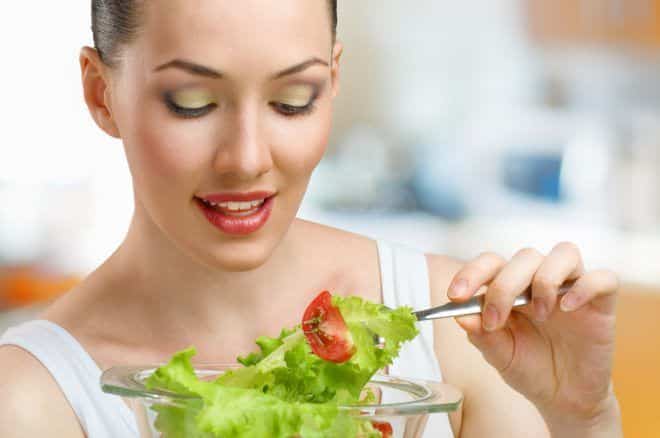
A special diet for reflux gastritis plays an important role in the treatment process, which must be followed throughout the entire recovery period. It is similar to diets for other gastrointestinal diseases, but has some distinctive features.
During normal functioning of the gastrointestinal tract, food is processed by acidic juice in the stomach and then enters the intestines, where it is finally digested under the influence of an alkaline environment. This movement of food is ensured by a special valve - a gatekeeper, which operates in opening and closing mode.
With pathology in the work of the pylorus, the reverse reflux of food from the intestines into the stomach begins, which is called bile reflux. As a result, the alkaline environment begins to interact with the acidic environment of the stomach. This leads to a negative effect on the gastric mucosa and the development of gastritis. If not treated in a timely manner, inflammation can develop into numerous erosions and even stomach ulcers.
- feeling of heaviness in the stomach;
- bloating;
- paroxysmal pain in the stomach;
- nausea and vomiting;
- bitter taste in the mouth;
- heartburn;
- intestinal disorders;
- the presence of bile in the vomit;
- decreased appetite;
- weight loss;
- wounds in the corners of the mouth.
Unpleasant and painful sensations appear mainly after eating, even if it was only a snack. The frequency and severity of symptoms depend on the severity of the disease.
Such symptoms may not appear for a long time. Gastritis often occurs unnoticed, and a person may not be aware of the disease.
With pathology in the gastrointestinal tract, disturbances occur during the digestion of food. This, in turn, leads to the body not receiving all the necessary nutrients and vitamins. As a result, malfunctions in the functioning of other organs and systems of the human body may occur.
Therefore, it is important to carefully monitor your health and periodically undergo examination by a gastroenterologist.
There are several main reasons for the development of gastritis:
- operations on the stomach or intestines;
- long-term use of antibiotics or hormonal drugs;
- smoking, alcohol;
- stress;
- unhealthy food;
- irregular meals.
Only a doctor can make an accurate diagnosis. During the examination, he also identifies the cause of the disease and gives recommendations for treatment and lifestyle.

Prevention plays an important role. Eliminating junk food and the negative impact of lifestyle on the gastrointestinal tract will help you avoid serious digestive problems.
It is necessary to monitor children's nutrition from an early age and focus on proper nutrition. Therapeutic nutrition for reflux gastritis plays a major role. The diet consists of easily digestible foods that will provide the body with useful substances and will not cause irritation to the stomach or intestines.
The diet for gastritis consists of normalizing the functioning of the intestine and its microflora, which helps neutralize bile acids and reduce their harmful effects on the stomach.
Dietary food has the following effects:
- Reduced acidity. A special drinking regimen allows you to cope with high acidity, and certain foods help normalize the digestion process.
- Reducing the sensation of pain and heaviness. Allowed products from the diet menu envelop the walls of the stomach and protect from the effects of juice, thereby reducing pain. Small portions are quickly digested and eliminate the feeling of heaviness.
- Accelerating the process of digesting food. Mashed and boiled foods are quickly absorbed in the stomach, and there is almost nothing left for the intestines to digest, therefore, the risk of food being thrown back into the stomach is minimized.
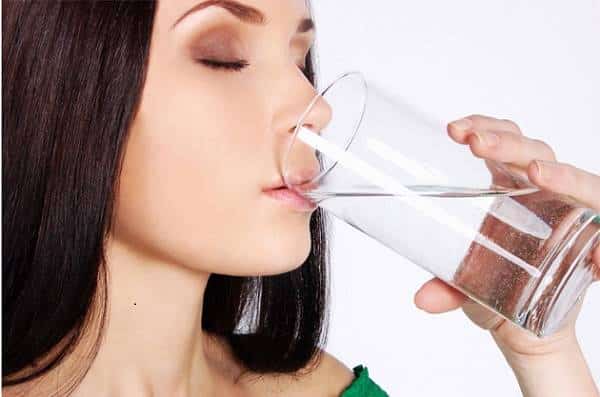
Important nutrition rules for gastritis:
- before meals you should drink a glass of boiled water, which will help reduce stomach acidity;
- eat 5-6 times a day in small portions so as not to overload the stomach;
- avoid hunger and overeating;
- prepare food by boiling, baking or steaming;
- alcoholic drinks should be excluded;
- observe the drinking regime - do not drink during meals, the total volume of liquid is up to 1 liter per day;
- take only warm food; cold or too hot food irritates the stomach;
- exclude late dinners and night snacks, because at this time the intestines are actively working;
- after eating, it is forbidden to lie down due to an increased risk of alkali entering the stomach;
- during an exacerbation of the disease, it is better to eat while standing;
- In the acute stage, it is also undesirable to wear tight belts, because this contributes to intensifying attacks.
If all dietary recommendations are followed, the patient can improve their health in a short time.
The diet for reflux gastritis is very similar to the diet for esophagitis. The basis of nutrition in the treatment of gastritis consists of dishes and products that do not overload the stomach and do not cause excessive production of gastric juice. Dishes should have a semi-liquid, pureed consistency.
You can eat the following foods:
- liquid and half-cooked porridges;
- liquid vegetable and milk soups;
- boiled lean meat, finely pureed or soufflé (chicken, turkey, beef);
- boiled or steamed fish;
- vegetable puree;
- boiled eggs or steamed omelet;
- fresh milk;
- pureed low-fat cottage cheese;
- small amount of butter;
- slightly dried bread;
- compote, weakly brewed tea, herbal decoctions;
- sweet fruits;
- mineral water.
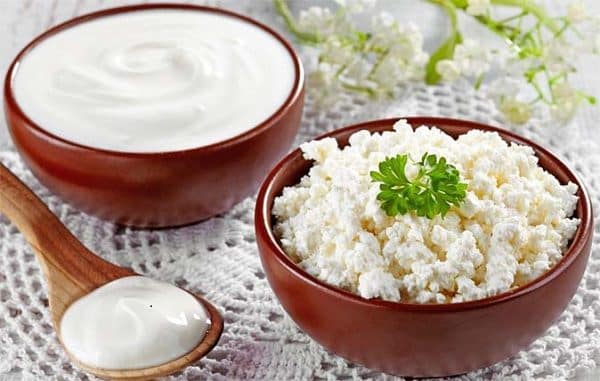
When treating gastritis, foods that overload the stomach and may contribute to excess secretion are prohibited.
The following foods should not be eaten:
- Fatty broths based on meat and fish.
- Fermented milk products (kefir, yogurt).
- Citrus fruits and all acidic fruits and vegetables.
- Unripe fruits and vegetables.
- Vegetables that cause fermentation in the intestines.
- High fat cottage cheese.
- All dishes with seasonings, herbs and spices.
- All fried foods.
- Limit the amount of salt.
- Various sauces.
- Mushrooms.
- Smoked and salted products.
- All types of canned food.
- Hard-boiled eggs.
- Coffee.
- Soda and all drinks with carbohydrates.
- Delicious baked goods.
- Coarse bread.
- Honey, jam.

Excluding such products from the menu will help avoid attacks and establish normal functioning of the gastrointestinal tract.
From permitted products, you can prepare a variety of dishes that will be tasty and provide the body with all the necessary substances.
- Breakfast - boiled milk porridge made from oatmeal with a small amount of butter.
- Second breakfast – steamed omelet.
- Lunch – vegetable puree with the addition of boiled beef.
- Afternoon snack – a piece of bread with low-fat cottage cheese, rosehip decoction.
- Dinner – mashed potatoes and steamed fish.
- Second dinner - a glass of herbal tea and a baked apple.
Traditional medicine offers many recipes for herbal decoctions that help alleviate the human condition and improve the digestion process.
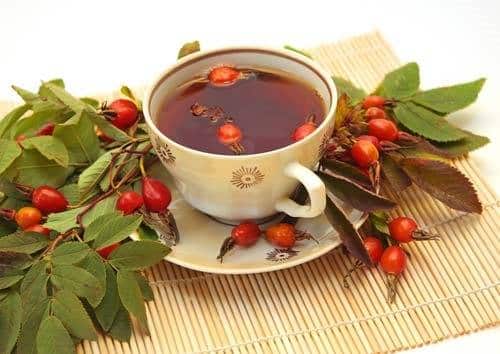
Medicinal decoctions:
- chamomile relieves inflammation and soothes;
- Rose hips are rich in vitamin C and have a beneficial effect on the stomach;
- calendula relieves discomfort and inflammation in the stomach;
- plantain has healing abilities.
All decoctions can be drunk throughout the day in between meals. Taking decoctions before bed is most effective.
Treatment of gastritis reflux consists of adjusting nutrition and following a certain diet. Specially selected ingredients improve digestion, reduce stress on the stomach and eliminate the unpleasant symptoms of gastritis.
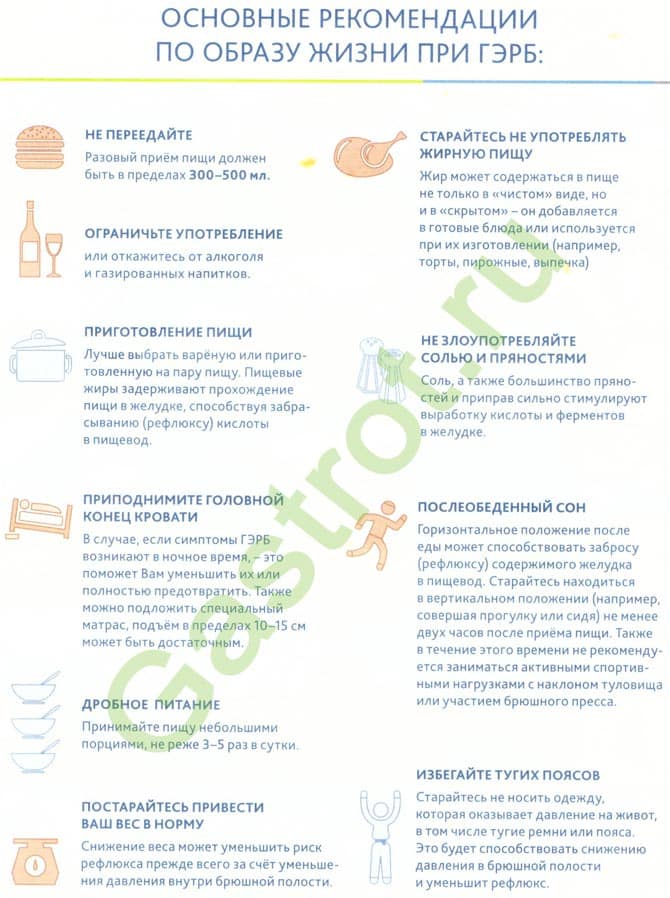
Basic lifestyle recommendations for gerb
A detailed list of prohibited and permitted foods allows you to follow the instructions exactly and easily create a varied daily diet and menu for the week. Additional intake of medicinal herbal decoctions will help you quickly cope with the discomfort of gastritis and improve your well-being.
The information on our website is provided by qualified doctors and is for informational purposes only. Don't self-medicate! Be sure to consult a specialist!
Author: Rumyantsev V. G. Experience 34 years.
Gastroenterologist, professor, doctor of medical sciences. Prescribes diagnostics and carries out treatment. Expert of the group for the study of inflammatory diseases. Author of more than 300 scientific papers.
source
When a person is diagnosed with reflux gastritis, in addition to drug treatment, the doctor prescribes diet therapy. Without it, it will be difficult for the patient to fight the disease. Since medications only reduce pain in the stomach, and even then not for long.
This diet is practically no different from any other diet, but still has its own characteristics for reflux gastritis.
Reflux gastritis is characterized by digestive disorders. Food that is not fully processed and mixed with bile fluid returns back to the stomach. This causes the mucous walls of the stomach to become inflamed. A person feels bloated, nauseated, vomiting, constipation or diarrhea, and a sharp decrease in weight. During the manifestation of such signs of a malfunction of the digestive system, as well as in the stage of exacerbation of the disease, a therapeutic diet can help avoid unpleasant consequences.
With reflux gastritis, there must be a clearly planned diet, according to certain rules. The patient needs to take foods that are easily digestible, rich in vitamins and minerals, do not cause irritation of the gastric mucosa, promote its speedy recovery and normalize the microflora, and restore healthy intestinal motility.
Following the rules of a therapeutic diet, patients with reflux gastritis should adhere to the following recommendations:
- Drink a glass of water before every snack. Water reduces the amount of hydrochloric acid in the stomach. Instead of water, you can use potato juice with a piece of white bread, which greatly facilitates the digestion process;
- eat in small portions - 5-6 times a day. Forget about late-night snacks, as they are very harmful to the gastrointestinal tract;
- food must be well crushed and chewed;
- After eating food, you should not immediately go to bed. Take a walk in the fresh air or sit in a chair;
- during an exacerbation of the disease, you should not wear tight trousers and a belt, as they compress the stomach and intestines, preventing it from working properly;
- Dishes must be steamed or boiled and should not be too hot or cold.
To reduce the aggressive effects of acids on the gastric mucosa, the doctor recommends that the patient adhere to a certain diet that excludes the following types of dishes :
These dishes should be excluded from the patient’s diet even if he feels well. They are extremely dangerous for biliary reflux, when the functioning of the human biliary system is disrupted.
To prevent gastritis from developing further, experts recommend reviewing your diet and excluding the following foods from it :
- rich fish and meat broths;
- honey, jam, sugar;
- liquid milk porridges;
- fresh and rich pastries, shortbread cookies;
- sour, unripe fruits and berries;
- vegetables that contribute to gas formation and bloating, for example, peas, cabbage, onions;
- dairy products;
- coffee, carbonated and alcoholic drinks, kvass;
- sunflower seeds;
- citrus fruit;
- tomato;
- mint and products containing it;
- confectionery;
- nuts.
In any case, consultation with a specialist is necessary. Having studied the patient’s condition, the doctor will give certain recommendations on dietary nutrition and the consumption of certain foods, and will help create an approximate menu for reflux gastritis.
The patient's diet should consist of semi-liquid, boiled, crushed food that will not burden the stomach with digestion. Among the permitted products it is worth highlighting:
- soups: mucous from cereals, milk soups with pureed cereals, milk porridges;
- lean boiled poultry, animal or fish meat;
- vegetable purees;
- soft-boiled eggs, steam omelettes;
- unleavened cottage cheese and milk;
- bread made from premium or first grade flour, baked yesterday;
- vegetable and butter (low-fat and unsalted);
- jellies, mousses, jelly;
- weak tea with milk, compote, herbal decoctions;
- unsweetened cookies (for example, biscuits).
You can think over a menu for every day up to a week. Believe me, even with such a limited diet, you can eat varied. The main thing is to listen to your body and the doctor’s advice.
- Breakfast: prepare buckwheat porridge with milk. To enhance the taste, you can add a small piece of butter.
- Lunch: You can have a snack before lunch, for example, toasted bread and unleavened cottage cheese.
- Lunch : boil vegetables: potatoes, carrots with a lean piece of meat and prepare puree soup.
- Afternoon snack : treat yourself to dry cookies, baked apple and dried fruit compote.
- Dinner : cook lean fish and mashed potatoes, as well as herbal tea in a double boiler or on the stove.
- Breakfast: separate the white from the yolk and prepare a steamed protein omelette,
- Lunch: you can make a casserole from unleavened cottage cheese, but without a fried crust, and weak tea with milk.
- Lunch : make a light soup with potatoes and carrots, but without frying, prepare meatballs from lean animal meat and add them to the soup.
- Afternoon snack : fruit or milk jelly with cookies will help cope with the feeling of hunger and reduce inflammation.
- Dinner : boil pumpkin pieces and puree them using a blender; make steamed chicken cutlets. Instead of pumpkin, you can use any permitted vegetables: potatoes, carrots, cauliflower and others.
There is no need to worry about some food restrictions. Consider the advantages of this: firstly, you can get rid of extra pounds, and secondly, you will help the diseased organ work properly.
We offer you several recipes for healthy dishes:
Pumpkin soup
Ingredients:
- 500 g pumpkin;
- 1 glass of milk;
- 1.5 glasses of water;
- a pinch of sugar or salt.
Preparation:
- Wash the pumpkin and peel it.
- Cut the vegetable into small cubes and cook for 5 minutes.
- Drain the broth, grind with a blender or rub the prepared vegetable through a sieve, add milk and sugar.
- When the puree soup boils, remove it from the heat. Let it brew for 15-20 minutes and feel free to start eating.
Classic steamed cutlets
Ingredients:
- 300 g of lean poultry, animal or fish;
- egg;
- half a glass of low-fat milk;
- 100 g of yesterday's loaf;
- salt on the tip of a knife.
Preparation:
- Mix the minced meat with the egg and salt.
- Soak the loaf in milk for 5 minutes.
- Mix milk with minced meat and form into cutlets.
- Pour water into a large saucepan and bring to a boil. Place the prepared cutlets in a colander and place it in the pan so that it is 1.5 cm from the water.
- Cover with a lid and cook over medium heat for 20-30 minutes.
Cottage cheese casserole
Ingredients:
- 250 g low-fat cottage cheese;
- 1 chicken or two quail eggs;
- a tablespoon of semolina;
- 2 teaspoons of sugar.
Preparation:
- Mix cottage cheese with sugar and egg.
- Add semolina and mix the mixture well again.
- Preheat the oven.
- Place the curd mixture in a mold and place in the oven for 20-30 minutes.
- The finished casserole should be cooled and served with warm tea.
If you follow your doctor's recommendations and exclude prohibited foods from your diet, you will have a great opportunity to get rid of the disease.
Smile more often and follow the rules of dietary nutrition, and then you will not have problems with digestion and health in general.
source
Diseases of the digestive system always require a revision of the patient’s nutritional culture and the preparation of a therapeutic diet. The diet for reflux gastritis is based on three principles: to minimize irritation of the gastric mucosa, to ensure complete and comfortable absorption of food and rapid movement further into the intestines.
Therapeutic nutrition involves giving up usual treats even on holidays, but this does not mean that the patient will have to eat oatmeal with water and dry biscuits
If three basic conditions are met, the patient will recover faster, will be able to get rid of depressing symptoms and continue to lead a normal lifestyle - with the exception of nutrition. You will have to remember about the diet even after the disease has passed from the acute stage to the stage of stable remission, on weekdays, holidays or on vacation.
The purpose of dietary nutrition for gastritis with reflux: to protect the stomach from excess acid, to prevent the reverse reflux of food with bile
To better understand how to properly build a therapeutic diet for reflux gastritis, you should understand what is going wrong in the patient’s body with this pathology. Reflux gastritis is not the most dangerous, but unpleasant form of stomach disease, in which, under the influence of some factors, the functioning of the pylorus malfunctions. The pylorus is a valve between the stomach and intestines, a sphincter, thanks to which pre-digested food passes into the intestines for further absorption and is kept from returning back.
If the pylorus is weakened, food combined with bile is pushed back into the stomach, which does not manifest itself very pleasantly: belching, heartburn, nausea, etc. The symptoms and treatment of reflux gastritis are described in detail in another article. This type of pathology is similar in external manifestations to reflux esophagitis, but the approach to treating the two pathologies is different, since different parts of the digestive tract are affected. There is no point in self-diagnosis; it is better to visit a doctor to find out exactly where and what the problem is. We will talk about how to eat properly with such a diagnosis in order to get rid of unpleasant symptoms and restore normal digestion.
Due to the presence of bile in the stomach and corrosive salts, the mucous membrane of the stomach walls becomes highly irritated and inflamed. The main goal of the diet is to minimize the impact on the mucous membrane. This is achieved by completely eliminating from the diet foods that potentially irritate the stomach, requiring long-term digestion, and following a special diet.
The basic rules are as follows:
- Consumption of liquid and semi-liquid foods.
- Heat treatment is carried out by boiling in water or steaming, stewing dishes.
- The use of a minimum of salt and vegetable oil, spices and animal fats should be completely abandoned.
- Before serving, dishes are cooled to a comfortable temperature. To digest hot and cold food, the stomach tenses, which is extremely undesirable.
- Reducing the usual serving size by two to three times - this way the food will be digested faster and will not linger in the stomach.
- Eating up to six times a day, for the same purpose.
- Avoid feeling hungry - this provokes the release of a large volume of gastric juice. In addition, a hungry patient may break loose and eat what is prohibited in excessive quantities.
The diet for reflux esophagitis and the diet for GERD are similar to this, but each has its own characteristics. In order not to risk your health by using trial and error to determine which products are suitable and which ones make you feel worse, you should consult your doctor and do not violate his instructions.
Advice: to reduce the level of stomach acidity with reflux gastritis, it is recommended to drink a glass of regular boiled water before meals. It can be replaced with freshly squeezed potato juice.
For gastritis with reflux, the gastroenterologist will describe in detail which foods and in what quantities are allowed to be consumed without jeopardizing health; the patient’s task is to strictly adhere to the list
The table indicates foods and dishes that can be included in the patient’s diet, and which should be excluded forever. The patient must understand the importance of following a diet and not breaking it. If the condition worsens, you should temporarily switch to a strict diet consisting of mineral water, a decoction of medicinal herbs, liquid vegetable puree, and pureed rice soup. But even if you feel good for a long time, heartburn, belching, vomiting, and intestinal problems do not bother you, this does not mean that you can forget about the diet and return to your previous diet.
| Allowed foods and dishes | Prohibited foods and dishes |
| Slimy soups with the addition of cereals (not all), pureed vegetable soups in water, without frying | Rich broths, including fish and mushroom |
| Semi-liquid, boiled porridge on water | Fatty, fried, salted, smoked, pickled, flavored with herbs and spices |
| Vegetable purees (potatoes, beets, carrots), fruit purees (sweet apples, pears) | Vegetables containing coarse fiber - raw onions, radishes, cabbage, any greens |
| Low-fat, but not sour cottage cheese and milk | Legumes, nightshades – tomatoes, eggplants |
| Eggs as an omelet or soufflé | Fried egg |
| Yesterday's wheat bread, or fresh dried | Fresh and rye bread, muffins, soft biscuits, puff pastries, shortbread |
| Lean poultry in the form of minced meat, or boiled minced meat, or soufflé | Dairy products |
| Lean fish in the same form, steamed or baked | Sour, unripe fruits and berries |
| By-products in the form of pates and soufflés - liver, tongue | Coffee, cocoa, strong tea |
| Vegetable oil | Carbonated drinks, all types of alcohol |
| Compotes, weak tea, herbal infusions | Honey, jam |
Important: All products for preparing food for a patient with reflux gastritis must be of the highest quality and absolute freshness. You should not use unripe or rotten fruits and vegetables, and it is recommended to consume cooked meat, fish dishes, omelettes, and dairy products on the same day and do not store them in the refrigerator.
At first, creating a balanced menu is difficult, but after two to three weeks the patient gets involved and gets used to the new food culture
The menu for every day for reflux gastritis necessarily includes a liquid dish (mucoid soup with cereals, pureed vegetable soup with water), a meat or fish dish in the form of pate, meatballs, quenelles as a source of protein and a fruit dessert in the form of soufflé, mousse, jelly as a source of vitamins and minerals.
| Day of the week | Breakfast | Lunch | Dinner | Afternoon snack | Dinner |
| Monday | Buckwheat porridge with a slice of butter, weak tea | Dried bread with unleavened homemade cheese | Soup with rice and carrots, slimy on water, liver soufflé, compote | Baked apple, biscuits | White fish meatball, mashed potatoes with water, herbal tea |
| Tuesday | Egg white omelette, milk tea | Berry jelly, biscuits | Liquid water soup with potatoes, carrots and turkey meatballs, fruit jelly | Low-fat cottage cheese casserole, compote | Cauliflower puree, fish or chicken soufflé, weak tea |
| Wednesday | Fruit mousse, glass of milk | Lazy dumplings | Pumpkin puree soup, steamed cutlets, compote | Rice pudding, | Omelet, dry bread with low-fat cheese, herbal decoction |
| Thursday | Cottage cheese casserole with semolina, weak tea | Baked apple or pear | Soup with buckwheat and carrots, steamed fish cutlet, dried apricot infusion | Milk jelly, cookies, tea | Baked pumpkin with chicken soufflé |
| Friday | Boiled eggs, bread with unleavened cheese | Fruit mousse | Cauliflower soup, meatballs, compote | Mashed cottage cheese and cookies | Fish pudding, broccoli puree, herbal infusion |
| Saturday | Rice porridge with milk, weak tea | Fruit jelly, cookies | Lenten beetroot soup with poultry quenelles, baked apple | Bread with lean cheese, compote | Mashed potatoes with fish cutlet |
| Sunday | Milk jelly, cookies | Apple, pear and banana puree | Pumpkin puree soup with zucchini and dried bread, steam cutlet, tea | Semolina porridge with fruit sauce, dried apricot infusion | Cauliflower soufflé, steamed liver pancakes. |
Note: with gastritis with reflux, food is taken strictly in an upright position. At the end of a meal, you should never lie down, so as not to provoke the return of food mass from the intestines back to the stomach. It’s better to take a short walk or sit quietly - exercise is also contraindicated. If reflux gastritis has worsened, experienced patients and doctors recommend having breakfast, lunch and dinner while standing.
During the acute stage of the disease and during its transition to the resting stage, all dishes are pureed and served at a comfortable temperature
The diet for gastritis with reflux in the acute stage is extremely simple; no special recipes are required. The diet consists of mineral water, herbal decoctions, pureed rice porridge with water, and mashed baked sweet apples. After a few days, improvement occurs and the diet expands. You will have to follow a strict diet for at least 3 months, so it is worth stocking up on interesting recipes that will not harm the patient and will delight him on weekdays and holidays.
Beetroot soup without tomato paste is suitable for a patient with reflux gastritis; sour cream and herbs are added after the disease becomes chronic
This light soup is best prepared in the summer from young root vegetables and served completely cooled at room temperature. An excellent alternative for patients who find it difficult to give up borscht.
Ingredients for cooking:
- beets – 1 large;
- carrot – medium;
- potatoes - 1 medium;
- onion - half;
- salt, vegetable oil.
- Wash the vegetables, peel and cut into strips.
- Bring 2 liters of water to a boil in a saucepan, place the vegetables in a saucepan, pour in a spoonful of vegetable oil, and also put on the fire.
- Cook vegetables, stirring, 5 minutes. – they shouldn’t fry. Pour in two ladles of water from the pan and simmer covered for 10 minutes.
- Place the vegetables in a pan of boiling water, add salt, cover with a lid, and cook until fully cooked.
- Turn off the finished beetroot soup and cool. Grind in a blender or rub through a sieve.
If desired, chicken quenelles and liver soufflé are served with beetroot soup - recipe below.
To prepare liver soufflé, use an oven or slow cooker.
This dish is an alternative to fatty liver pate; it is served as a stand-alone dish for breakfast, dinner, or as a side dish for viscous porridges. You can serve the soufflé with biscuits and toasted bread.
Ingredients for cooking:
- chicken or beef liver, fresh, not frozen – 500 g;
- egg - 2 pieces;
- carrot – 1 medium;
- milk - a third of a glass;
- flour – 3-4 tablespoons;
- salt;
- butter.
The classic recipe calls for onions. The vegetable is added for long-term, persistent remission.
- Wash the carrots and boil in boiling water for 15 minutes.
- Rinse the liver, remove all veins and films, trim off the fat, cut into pieces if necessary.
- Using a blender or meat grinder, puree the liver with carrots.
- Separate the whites from the yolks. Grind the yolks with salt and add to the liver mass.
- Pour in milk, stir, add flour, stir again.
- Beat the whites and carefully fold into the mixture.
- Grease the mold with butter and carefully pour the mixture. Place on a baking sheet, pour half a glass of cold water onto the bottom of the baking sheet, bake in the oven at 180 degrees for 30-40 minutes.
Cool the soufflé, cut into slices, serve with toasted bread, mashed potatoes, or porridge. A soufflé from poultry or fish fillet is prepared in the same way.
Puddings, souffles, mousses, jelly - desserts that a person suffering from gastritis with reflux should switch to
Pudding is served for breakfast and afternoon tea as dessert. Semolina can be replaced with rice, preferably crushed, apples with pears, pumpkin, bananas.
Ingredients for cooking:
- semolina - half a glass;
- milk - one and a half glasses;
- sugar – two spoons;
- eggs – 2 pieces;
- sweet apples - two pieces;
- butter.
Algorithm for cooking:
- Boil milk with a spoonful of sugar, add semolina in a thin stream, stirring in a circle. Cook for five minutes, turn off, cover with a lid and leave to swell.
- Separate the whites from the yolks, add the yolks and butter to the semolina porridge, stir.
- Beat the egg whites and gently fold into the semolina mixture.
- Wash, peel, core, and cut apples into thin slices.
- Place two tablespoons of semolina mixture into greased molds, add a layer of apple slices, and sprinkle with sugar. Repeat layers and so on until you run out of ingredients and the molds are full.
- Place the molds on a baking sheet with water and place in the oven, heated to 160 degrees, for half an hour.
- Turn off the oven and leave the pudding to cool to room temperature. Invert onto plates and serve.
Pudding, like soufflé, can be conveniently prepared in a slow cooker.
Summary: Proper nutrition is the basis of health in gastrointestinal diseases, including reflux gastritis. It’s difficult to get used to a new regime and give up your favorite foods and drinks. It is worth remembering that it was poor eating habits and alcohol abuse that caused poor health. If you return the same foods to your diet, the attack of the disease will recur, perhaps in a more severe form. If you endure the difficult period of adaptation, the reward will be a long-term remission without discomfort, digestive disorders and an expanded menu.
source
Diet
Proper nutrition is important for the treatment of the disease. The diet for duodenogastric reflux was not specially developed; it is based on generally accepted principles of nutrition for gastrointestinal diseases.
Black bread, coffee, chocolate, onions, garlic, and tomatoes are excluded from the diet. They reduce the tone of the gastric sphincter of Oddi. You should avoid cabbage, sour apples and other foods that increase the acidity of gastric juice.
During snacks, it is allowed to take crackers and dry crackers, which promote the outflow of bile. You should also exclude spicy, fried, and canned foods.
The menu should include vegetarian soups, vegetable and fruit dishes, bran bread, low-fat cottage cheese, juices, yoghurts, and mineral water.
It is better to eat lean meat, fish, vegetables, fruits, cereals and dairy products. A complete list of permitted and prohibited products can be obtained from a gastroenterologist. Basically, treatment tables No. 1 and No. 2 are prescribed, recommended for gastrointestinal diseases.
There should be 5 or 6 small meals per day. After eating, it is better not to bend over or do other movements associated with abdominal tension. You should avoid wearing clothes that are tight around the waist to avoid increasing intra-abdominal pressure.
Features of dietary nutrition for esophagitis and gastritis with high acidity
One of the main symptoms of reflux esophagitis and gastritis is severe heartburn. It is a consequence of increased acidity in the esophagus due to the reflux of gastric juice.
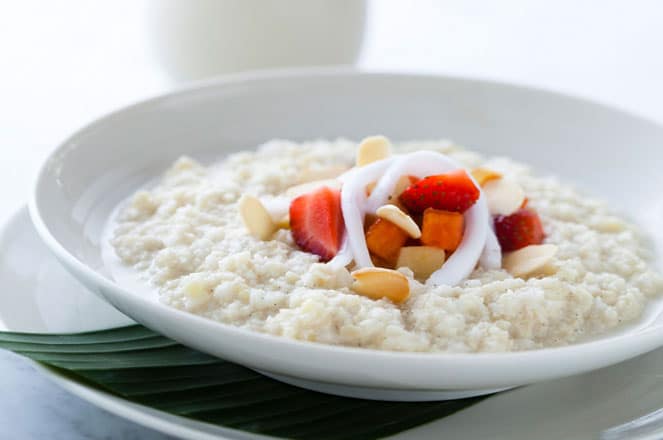
Diet for reflux esophagitis and gastritis with high acidity is no less important than taking antacid (acidity-reducing) medications. It also has a number of features:
- meat, fish, mushrooms and broths based on them are excluded during an exacerbation, as they have a strong stimulating effect on the gastric mucosa;
- preference is given to whole milk and dishes with its addition (milk noodle soup, buckwheat with milk, etc.);
- It is advisable to pre-boil vegetables and fruits;
- During an exacerbation, you need to drink mainly alkaline mineral waters.
Using Donat Mg for reflux (GERD)
| Time to take for reflux (GERD) | Amount for reflux (GERD) | Reflux water temperature (GERD) | Use for reflux (GERD) | Duration of use for reflux (GERD) |
| 20 minutes before breakfast | 150-200ml | Heated, without gas | slowly | 4 to 6 weeks |
| 20 minutes before lunch | 150-200 ml | Better heated, without gas | Slowly | |
| 20 minutes before dinner | 150-200 ml | Room temperature | Slowly |
When treating reflux (GERD) with Donat Mg mineral water, it is worth considering that at the initial stage there may be some loosening of the stool. This is a normal phenomenon that accompanies the body’s cleansing of harmful toxins.
For patients suffering from reflux (GERD), the duration of treatment with Donat Mg is no more than one and a half months. The break before starting the next course of treatment for reflux (GERD) is 2-3 months. A similar course for patients who are bothered by reflux (GERD) must be repeated at least 2-3 times annually.
After completing the course of taking Donat Mg mineral water for the treatment of reflux (GERD), it is recommended to drink Sulinka mineral water before meals (15-20 minutes), and Stelmas artesian water after meals (2-3 hours later).
If, in addition to reflux, you suffer from chronic diseases of the kidneys and digestive organs, it is advisable to obtain the recommendations of your doctor before starting treatment.
← Back to section
